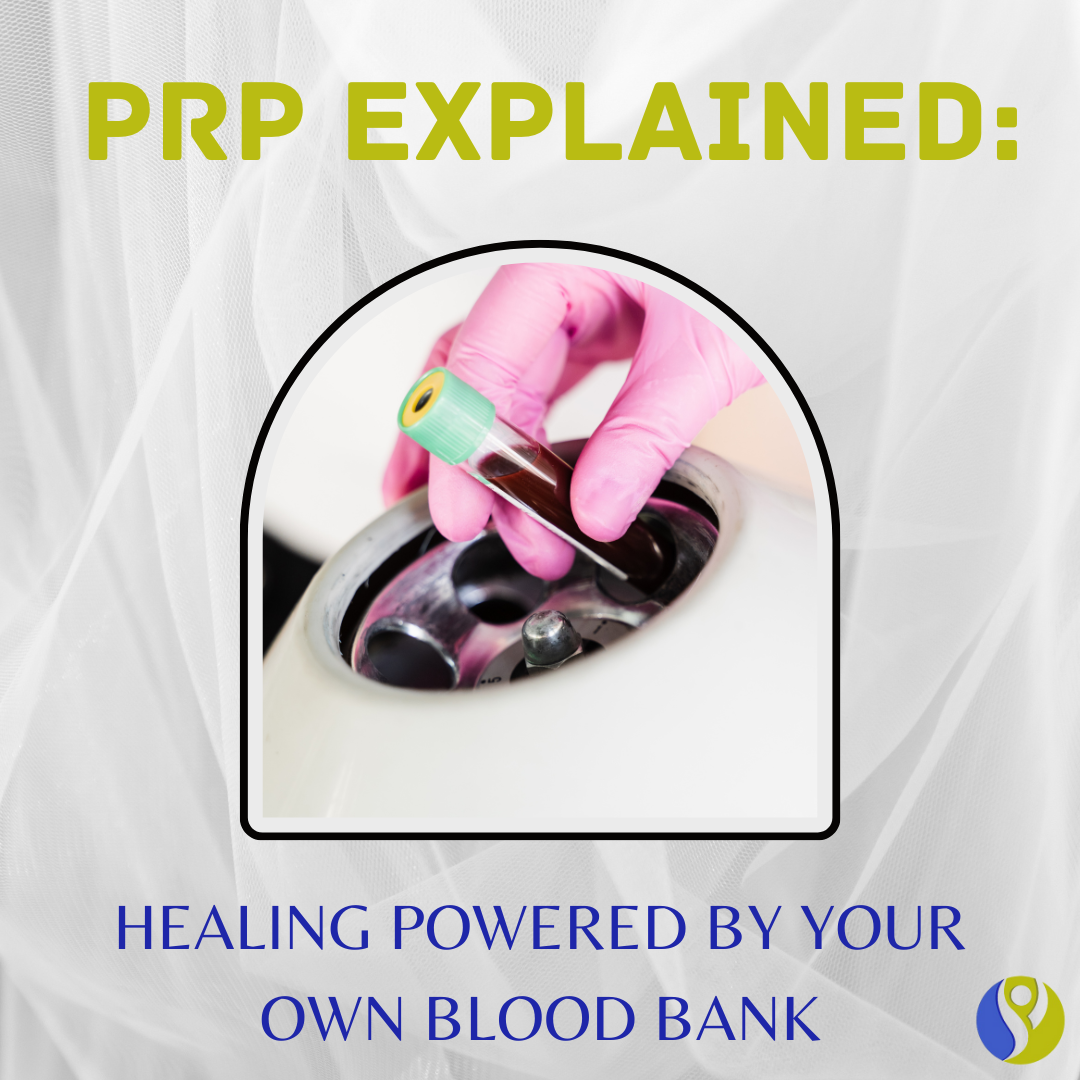PRP Explained: Healing Powered by Your Own Blood Bank
What Is PRP?
Lately, patients have been asking us about PRP so let’s talk about it. Granted, we do not perform PRP injections. That is out of our scope of practice, but it is always good to be informed about different treatment modalities out in the ether. This blog is not a treatment recommendation; the information provided is for educational purposes only.
Platelet-Rich Plasma (PRP) is not the latest smoothie ingredient, but it does involve spinning your blood until the platelets, tiny cell fragments packed with growth factors are concentrated. Those platelets are then injected into an injured tendon, arthritic knee, or sometimes post-surgical site with the hope that they’ll accelerate healing.
Think of it as sending in your body’s “construction crew” with extra tools, all drawn from your own supply closet.
Mechanism: Platelets secrete growth factors like PDGF, TGF-β, VEGF, and IGF, which may stimulate tissue repair, angiogenesis (new tiny blood vessels), and anti-inflammatory responses (PubMed ID: 37449642).
Conditions It’s Used For
Osteoarthritis (especially knee) (PMC10652151)
Tendinopathies (Achilles, rotator cuff, lateral epicondylitis, patellar)
Plantar fasciitis, bursitis, carpal tunnel
Adjunct to surgery (meniscus repair, fracture healing, bone grafting)
Benefits
Uses your own blood → low immune rejection risk
Minimally invasive vs. surgery
May reduce pain and improve function in some OA and tendon patients
Early evidence suggests improved healing when paired with surgical repairs
The Cons (Because No Therapy Is Perfect)
Standardization problem: PRP is like sourdough bread—every clinic has its own recipe. Platelet concentration, leukocyte inclusion, and activation methods vary widely (PMC10652151).
Mixed results: Some RCTs show benefits, others find no difference compared to saline or corticosteroid injections (PMC10333515).
Costly: Often out-of-pocket, not always covered by insurance.
Not magic: Works better in mild-to-moderate disease than in severe degeneration.
Risks: Injection pain, bleeding, infection (rare).
Bottom Line
PRP is exciting and biologically plausible, but it’s still the Wild West of regenerative medicine. The science says: it helps some, it disappoints others, and we desperately need standardized protocols. Until then, PRP is less “miracle cure” and more “promising experiment.”
If you are interested in learning more about PRP, please reach out to your healthcare providers.
References
Bennell KL, Paterson KL, Metcalf BR, et al. Platelet-rich plasma for the management of hip and knee osteoarthritis. Clin J Sport Med. 2023;33(5):444-452. doi:10.1097/JSM.0000000000001210
Filardo G, Kon E, Boffa A, Di Matteo B, Merli ML, Marcacci M. PRP intra-articular injections for cartilage degeneration and osteoarthritis: single- versus double-spinning approach. Knee Surg Sports Traumatol Arthrosc. 2012;20(10):2082-2091. doi:10.1007/s00167-011-1837-x
Andia I, Maffulli N. Platelet-rich plasma for managing pain and inflammation in osteoarthritis. Nat Rev Rheumatol. 2013;9(12):721-730. doi:10.1038/nrrheum.2013.141
Murray IR, Geeslin AG, Goudie EB, Petrigliano FA, LaPrade RF. Platelet-rich plasma applications in orthopaedics: a critical appraisal of the literature. J Bone Joint Surg Am. 2015;97(10):809-818. doi:10.2106/JBJS.N.01060
Dai WL, Zhou AG, Zhang H, Zhang J. Efficacy of platelet-rich plasma in the treatment of knee osteoarthritis: a meta-analysis of randomized controlled trials. Arthroscopy. 2017;33(3):659-670.e1. doi:10.1016/j.arthro.2016.09.024



